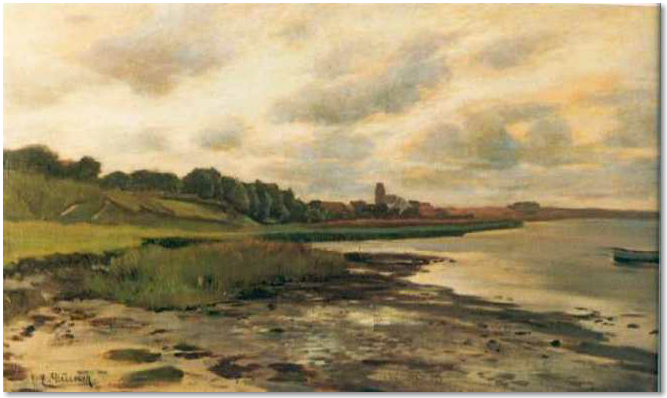In addition to being an artist and citizen of Sylt, Korwan was also a dedicated
local politician, and as such, was involved in the development of Westerland.
In the 1920s, Korwan became an esteemed resident of the island, as his
election to the Westerland town council makes clear. He championed the
needs of the island in four different ways. He designed postcards and, around
1902, an elaborate poster for the Westerland North Sea resort He organized
and administered the municipal savings bank, and sat for a time on the Board
of Directors of the Steamship Navigation Company of Sylt. He lobbied
successfully at the Prussian Ministry of the Interior in Berlin for Westerland
to be given its own town charter, which it received in 1905. In 1908 he
restored the interior spaces of the Old Friesian House in Keitum, and in 1913
he painted the ceilings of the choir and nave in the Church of St. Severin in
Keitum.
Korwan's professional success and his standing in the population stood in contrast to
his rocky marriage. In the life of his wife Franziska (née Achenbach) there were other
men besides Franz Korwan. According to statements by her daughter Erna Korwan,
her mother's wedding came to be seen as a shotgun wedding.
Already as a child Erna had resented her mother's relationships with other men. The
mother-daughter relationship was extremely cool, so that Erna took her father's side.
In 1920 the marriage ended in divorce. One year later, Korwan sold his properties in
Westerland and moved to his patron in Keitum: Julius Saenger, a businessman from
Hamburg and an assimilated Jew. After Saenger died in Keitum in 1929, Korwan and
the widow, Else Saenger, became life partners.
Keitum/Sylt,
home of Franz
Korwan 1921

